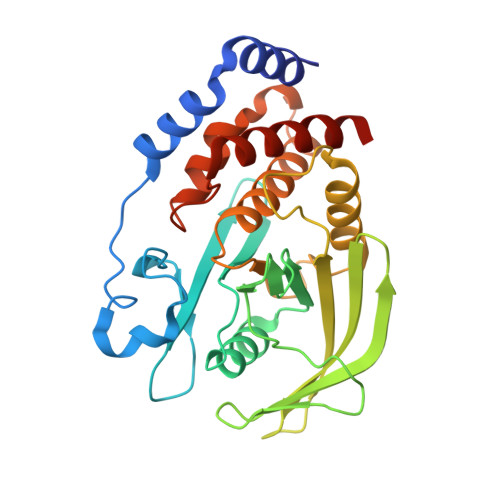Conserved conformational dynamics determine enzyme activity.
Torgeson, K.R., Clarkson, M.W., Granata, D., Lindorff-Larsen, K., Page, R., Peti, W.(2022) Sci Adv 8: eabo5546-eabo5546
- PubMed: 35921420
- DOI: https://doi.org/10.1126/sciadv.abo5546
- Primary Citation of Related Structures:
7MKZ, 7MN7, 7MN9, 7MNA, 7MNB, 7MNC, 7MND, 7MNE, 7MNF, 7MOU, 7MOV, 7MOW - PubMed Abstract:
Homologous enzymes often exhibit different catalytic rates despite a fully conserved active site. The canonical view is that an enzyme sequence defines its structure and function and, more recently, that intrinsic protein dynamics at different time scales enable and/or promote catalytic activity. Here, we show that, using the protein tyrosine phosphatase PTP1B, residues surrounding the PTP1B active site promote dynamically coordinated chemistry necessary for PTP1B function. However, residues distant to the active site also undergo distinct intermediate time scale dynamics and these dynamics are correlated with its catalytic activity and thus allow for different catalytic rates in this enzyme family. We identify these previously undetected motions using coevolutionary coupling analysis and nuclear magnetic resonance spectroscopy. Our findings strongly indicate that conserved dynamics drives the enzymatic activity of the PTP family. Characterization of these conserved dynamics allows for the identification of novel regulatory elements (therapeutic binding pockets) that can be leveraged for the control of enzymes.
Organizational Affiliation:
Department of Chemistry and Biochemistry, The University of Arizona, Tucson, AZ, USA.

















